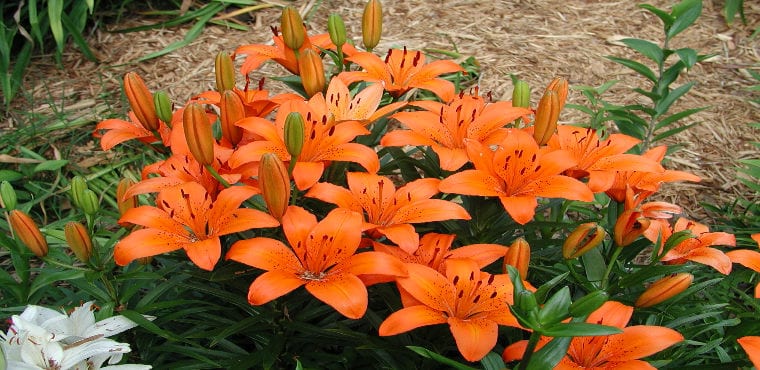Each week since 1997, Dr. Gerald Klingaman has offered readers a unique window as he chronicles of the social history of plants.
“What always interested me was the background of the plants and how they got there and the people involved in bringing them forward,” he said.
Klingaman, a retired extension horticulturist who is now operations director for the Botanical Garden of the Ozarks in Fayetteville, Arkansas, has created is a library of hundreds of plant histories that run in newspapers across the state and have become a favorite of gardeners in Arkansas and beyond. We hope you’ll enjoy our extensive archive of his works and return each week to see what’s new. Lilium hybrid groups; Garden Lilies
I try hard not to repeat myself in these columns but sometimes this effort leads to some unexpected omissions. I was sure I had discussed at least some of the true lilies, but I find no evidence of having done so. So, let us consider the lilies of the field.
Lilies are bulbous herbs scattered throughout mountainous regions of the Northern Hemisphere with the greatest number found in Asia (55) and about 20 here in North America. Some authoritative sources claim there are 80 known species; others 120. These species are divided into seven sections for classification purposes that, until recent times, have been impossible to crossbreed.
Lilies – the base species used to develop the enormous lily family – are somewhat unique among the bulbous plants in that their bulb does not develop a covering sheath (the tunic). Instead individual scales are borne naked on the shortened stem. Another difference, because lilies are mostly summer blooming, they initiate flower buds during the spring when the shoots are emerging from the ground, not in late summer like tulips and other spring blooming bulbs.
Most lilies are native to montane conditions that provide cool, moist conditions, sharp drainage and the dappled light of a semi-forested environment. They have been grown in gardens since Biblical times, so many gardeners have kind of always known them though they may not have actually grown them in their own garden beds. As early as the 1600’s lilies were considered “old fashioned” by garden writers of the day. As new species were introduced into cultivation over the next several hundred years, none gained super-star status.
These new lilies were grown in gardens but as straight species. The first hybrid garden lilies did not begin appearing until after 1910 from breeders working in Japan and the United States. After World War II, breeding efforts increased and techniques such as colchicine use to double the chromosome number, embryo rescue and finally inter-sectional hybridization became a reality. Today, mostly hybrid lilies are sold with the most important groups described below.
Asiatic hybrid lilies (crosses of more than a dozen Asian species from section Sinomartagon) were the first hybrids to be produced and are the first to bloom in the garden, usually beginning in late May and extending into June. They are mostly short, usually under 30 inches tall and have five to seven up-facing, non-fragrant flowers per stem. Colors are in all shades but oranges, yellows, and maroons are most common with bicolors frequently seen.
Oriental hybrid lilies (crosses of several species from Japan and China in section Archeliron) are large flowered plants three to four feet tall with wide-flaring, outward facing, often pink, white or cherry-colored bicolored flowers. The petals are often marked with a series of dots. Flowers are fragrant with blooms produced in July. At the present time, the Oriental hybrids are the most popular as based on acreage of production, but this is changing as the inter-sectional hybrids become more available.
Trumpet lilies (hybrids of many Asiatic species with elongated blooms) have fragrant, trumpet shaped, sometimes outward or downward facing flowers. Plants are the tallest at up to six feet with blooms appearing from mid-July into early August. They are also the poorest performers in Southern gardens. The Longiflorum hybrids (think of the Easter lily) are a separate group but do better in southern gardens.
Inter-sectional hybrids have been developed over the last 50 years that have allowed the combination of the desirable traits of each section into a single hybrid progeny. Most of these hybrids are sterile triploids, so they have thicker leaf and floral features and great hybrid vigor. Of the inter-sectional hybrids, the Oriental-Trumpet and the Longiflorum-Oriental hybrid groups are being produced in the greatest quantity.
In future columns we will consider specific garden lilies in greater detail.
For more information about horticulture or to see other Plant of the Week columns, visit Extension’s Website, www.uaex.edu, or contact your county extension agent.






